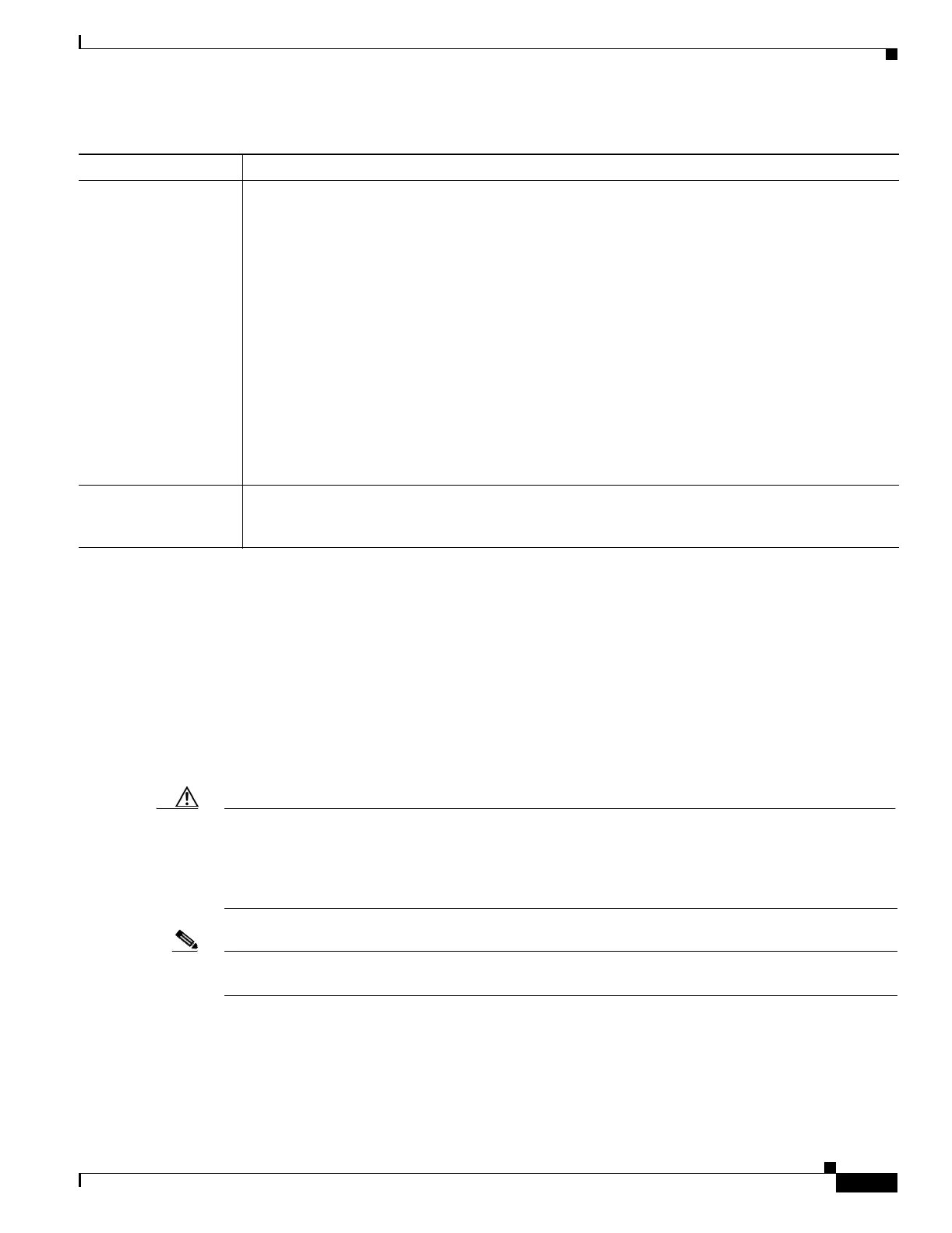31-19
Catalyst 2950 and Catalyst 2955 Switch Software Configuration Guide
78-11380-12
Chapter 31 Troubleshooting
Using Debug Commands
Using Debug Commands
This section explains how you use the debug commands to diagnose and resolve internetworking
problems. It contains this information:
• Enabling Debugging on a Specific Feature, page 31-20
• Enabling All-System Diagnostics, page 31-20
• Redirecting Debug and Error Message Output, page 31-20
• Using the debug auto qos Command, page 31-21
Caution Because debugging output is assigned high priority in the CPU process, it can render the system
unusable. For this reason, use debug commands only to troubleshoot specific problems or during
troubleshooting sessions with Cisco technical support staff. It is best to use debug commands during
periods of lower network traffic and fewer users. Debugging during these periods decreases the
likelihood that increased debug command processing overhead will affect system use.
Note For complete syntax and usage information for specific debug commands, see the command reference
for this release.
Ethernet performance
degradation due to
excessive network
latency
The interleave feature introduces extra latency to increase noise margin.
• Adjust upper-layer network protocols to allow for high latency.
• Change to a profile with a higher data rate to increase link bandwidth. This decreases the noise
margin.
–
Choose a lower interleave block size value.
• Select a low-latency (LL) LRE profile, such as LRE-5LL, LRE-10LL, or LRE-15LL.
Note Use the LL private profiles with care. The LL profiles have the LL feature enabled and the
interleaver feature turned off. The LL feature does not delay data transmission, but it makes
data more susceptible to interruptions on the LRE link.
All other profiles, public and private, have the interleaver feature enabled and the LL feature
disabled. The interleaver feature provides maximum protection against small interruptions
on the LRE link but delays data transmission. For more information about the LRE profiles,
see the “LRE Links and LRE Profiles” section on page 12-2.
LRE link quality
reduced in installations
with bundled cables
Cross-talk between the LRE links is causing all links to degrade. Disable unused LRE ports by using
the lre shutdown interface configuration command.
Table 31-2 LRE Port Problems (continued)
Problem Suspected Cause and Suggested Solution

